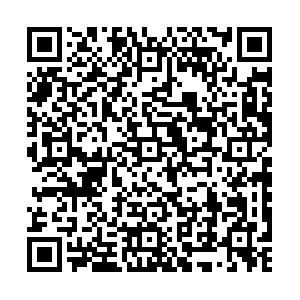Clinical Study on Different Doses of Solinaxin Combined with Xingpi Yanger Granule in the Treatment of Primary Nocturnal Enuresis in Children
-
摘要:
目的 探讨不同剂量索利那新联合醒脾养儿颗粒对小儿原发性夜间遗尿症(PNE)的疗效。 方法 选取2018年3月至2020年1月湖北省宜昌市第三人民医院儿内科收治的120例PNE患儿为研究对象,采用随机数字表法分为A组(40例,低剂量索利那新联合醒脾养儿颗粒)、B组(40例,中剂量索利那新联合醒脾养儿颗粒)、C组(40例,高剂量索利那新联合醒脾养儿颗粒)。对比3组临床疗效,对比3组患儿治疗前后膀胱容量、膀胱容量壁厚指数(BVWI),对比3组患儿复发情况,对比3组患儿治疗期间不良反应发生情况。 结果 3组总有效率对比差异无统计学意义(P > 0.05);3组患儿治疗前膀胱容量、BVWI差异均无统计学意义( P > 0.05),3组治疗后膀胱容量较治疗前均明显提高( P < 0.05),治疗后BVWI较治疗前均明显降低( P < 0.05),3组治疗后膀胱容量、BVWI差异均无统计学意义( P > 0.05);3组患儿治疗3个月后、治疗6个月后复发率差异均无统计学意义( P > 0.05);C组不良反应发生率高于A组、B组( P < 0.05),B组不良反应发生率高于A组( P > 0.05)。 结论 低、中、高剂量索利那新联合醒脾养儿颗粒治疗小儿PNE疗效相近,均可改善患儿膀胱功能,且对其复发率影响不大,但高剂量索利那新可明显增加不良反应的发生,从安全性考虑建议临床选取低剂量索利那新。 Abstract:Objective To investigate the effect of different doses of Solina xin combined with Xingpi Yanger granule on primary nocturnal enuresis (PNE) in children. Methods From March 2018 to January 2020, 120 PNE children admitted to Pediatric Internal Medical Department in The Third People’ s Hospital of Hubei province Yichang city were selected as the study subjects. The patients were divided into Group A (40 cases, low-dose Solina Xinlianxingpi Yanger granule), group B (40 cases, medium-dose Solina Xinlianxingpi Yanger granule), and group C (40 cases, high-dose Solina Xinlianxingpi Yanger granule) by using the random number table method. The clinical efficacy of the three groups was compared. Bladder volume and bladder volume wall thickness index (BVWI) before and after the treatment were compared among the 3 groups. The relapses of the 3 groups were compared. The occurrence of adverse reactions during the treatment was compared among the 3 groups. Results There was no significant difference in the total effective rate among the 3 groups (P > 0.05). There were no statistically significant differences in bladder volume and BVWI among the 3 groups before the treatment ( P > 0.05). Bladder volume was significantly increased after the treatment compared with that before the treatment in the 3 groups ( P < 0.05), and BVWI was significantly decreased after the treatment compared with that before the treatment ( P < 0.05). There were no statistically significant differences in bladder volume and BVWI among the 3 groups after the treatment ( P > 0.05). There was no statistically significant difference in the recurrence rate after 3 months and 6 months of treatment among the 3 groups ( P > 0.05). The incidence of adverse reactions in group C was higher than that in group A and group B ( P < 0.05), and the incidence of adverse reactions in group B was higher than that in group A ( P > 0.05). Conclusion Low, medium and high doses of Solinaxin combined with Xingpi Yanger Granule have similar effects on the treatment of PNE in children, both of which can improve the bladder function of children, and have little influence on the recurrence rate. However, high dose solinazine can significantly increase the occurrence of adverse reactions, so it is recommended to select low dose solinazine clinically for safety reasons. -
Key words:
- Solifenacin /
- Xingpi Yanger Granule /
- Children /
- Primary nocturnal enuresis /
- Effect
-
表 1 3组患儿临床资料比较( $\bar x \pm {\rm{s}}$)
Table 1. The clinic data comparison among the three groups ( $\bar x \pm {\rm{s}}$)
组别 n 性别(n) 年龄(岁) 病程(月) 夜间遗尿频率(次/周) 男 女 A组 40 21 19 6.14 ± 1.03 12.95 ± 2.14 5.74 ± 0.98 B组 40 22 18 6.47 ± 1.18 13.11 ± 2.26 5.48 ± 0.84 C组 40 24 16 5.99 ± 0.88 13.48 ± 2.47 5.31 ± 0.77 F/χ2值 0.473 2.242 0.562 2.491 P值 0.789 0.111 0.572 0.087 表 2 临床疗效比较)[n(%)]
Table 2. The clinical efficiency comparison [n(%)]
组别 n 显效 有效 无效 总有效率 A组 40 20(50.00) 15(37.50) 5(12.50) 35(87.50) B组 40 19(47.50) 17(42.50) 4(10.00) 36(90.00) C组 40 22(55.00) 16(40.00) 2(5.00) 38(95.00) χ2 1.401 P 0.496 表 3 患儿治疗前后膀胱容量、BVWI变化结果比较( $\bar x \pm {\rm{s}}$)
Table 3. The bladder volume and BVWI alteration results comparison for child patients before and after the treatment ( $\bar x \pm {\rm{s}}$)
组别 n 膀胱容量(mL) BVWI(mL/mm) 治疗前 治疗后 t P 治疗前 治疗后 t P A组 40 200.76 ± 32.15 269.52 ± 46.58 7.684 < 0.001*** 76.89 ± 12.37 47.04 ± 7.06 13.255 < 0.001*** B组 40 205.19 ± 33.13 275.81 ± 49.06 7.545 < 0.001*** 78.73 ± 13.44 46.25 ± 8.71 12.826 < 0.001*** C组 40 207.03 ± 35.11 280.59 ± 50.03 7.612 < 0.001*** 79.07 ± 13.92 44.82 ± 7.29 13.785 < 0.001*** F 0.371 0.523 − − 0.313 0.850 − − P 0.691 0.594 − − 0.732 0.430 − − 与治疗前相比,***P < 0.001。 表 4 患儿复发结果比较 [n(%)]
Table 4. The child patients’ symptom recurrence results comparison [n(%)]
组别 n 治疗3个月后 治疗6个月后 A组 40 1(2.50) 5(12.50) B组 40 1(2.50) 3(7.50) C组 40 0(0.00) 1(2.50) χ2 1.017 2.883 P 0.601 0.237 表 5 3组患儿治疗期间不良反应发生结果比较 [n(%)]
Table 5. The untoward reaction occurrence results comparison between the three groups for child patients during the treatment [n(%)]
组别 n 口干 便秘 消化不良 出汗增加 恶心呕吐 不良反应发生率 A组 40 1(2.50) 0(0.00) 0(0.00) 0(0.00) 1(2.50) 2(5.00) B组 40 1(2.50) 1(2.50) 0(0.00) 1(2.50) 2(5.00) 5(12.50) C组 40 2(5.00) 4(10.00) 1(2.50) 1(2.50) 2(5.00) 10(25.00)* χ2 0.517 5.426 2.017 1.017 0.417 6.716 P 0.772 0.066 0.365 0.601 0.812 0.035 与A组比较,*P < 0.05。 -
[1] Kosilov K V,Geltser B I,Loparev S A,et al. The optimal duration of alarm therapy use in children with primary monosymptomatic nocturnal enuresis[J]. Journal of Pediatric Urology,2018,14(5):447-447. [2] 余益萍,田永波,刘颖,等. 醒脾养儿颗粒治疗小儿原发性夜间遗尿症的临床观察[J]. 中国药房,2017,28(6):738-741. doi: 10.6039/j.issn.1001-0408.2017.06.05 [3] 黎灿强,邱敏捷,徐乐. 应用小剂量索利那新治疗小儿遗尿症的体会[J]. 天津医药,2015,43(4):436-438. doi: 10.11958/j.issn.0253-9896.2015.04.028 [4] ZHANG Ling-xian. Clinical value of small dose of solifenacin new treatment for children with primary nocturnal enuresis[J]. Journal of Henan Medical College,2016,13(4):123-126. [5] 许传亮,宋奇翔,方祖军,等. 儿童夜间遗尿症诊治指南[J]. 中华泌尿外科杂志,2015,36(11):801-805. doi: 10.3760/cma.j.issn.1000-6702.2015.11.001 [6] Chang S J,Laecke E V,Bauer S B,et al. Treatment of daytime urinary incontinence:A standardization document from the International Children’ s Continence Society[J]. Neurourology & Urodynamics,2017,36(1):7-14. [7] 黄小亮,郭玉红,李蔚,等. 改良清洁间歇导尿护理方法对预防尿路感染的疗效观察[J]. 河北医药,2019,41(20):3181-3184. doi: 10.3969/j.issn.1002-7386.2019.20.034 [8] 丁丽凤,马骏,金莹莹. 推拿联合行为干预治疗儿童原发性夜间遗尿症临床观察[J]. 上海中医药大学学报,2019,33(1):52-55. [9] Jianguo W,Qingsong P. Advances in etiology and treatment of refractory nocturnal enuresis in adolescents[J]. Journal of Dali University,2019,12(10):142-145. [10] 王冠群,刘毅东,孙杰,等. 坦索罗辛与索利那新在轻、中度良性前列腺增生合并膀胱过度活动症患者中的应用效果[J]. 检验医学与临床,2018,15(9):45-48. [11] 孔令军,赵佳龙. 索利那新对膀胱过度活动症病人逼尿肌功能及预后的影响[J]. 临床外科杂志,2019,27(9):798-800. doi: 10.3969/j.issn.1005-6483.2019.09.025 [12] 尹文利,王娟,李双辉,等. 康复新液联合索利那新治疗前列腺电切术后膀胱痉挛的疗效观察[J]. 现代药物与临床,2018,33(6):1448-1452. [13] 尹文利,李双辉,李永禄. 坦索罗辛联用索利那新与联用托特罗定治疗前列腺电切术后膀胱痉挛效果比较[J]. 现代仪器与医疗,2018,24(5):121-123. [14] 沈小钰,郭竹英,金莹莹,等. 基于小儿遗尿症临床综合征选用缩泉胶囊和醒脾养儿颗粒的疗效观察[J]. 中华全科医学,2019,17(2):173-175. -





 下载:
下载: 
